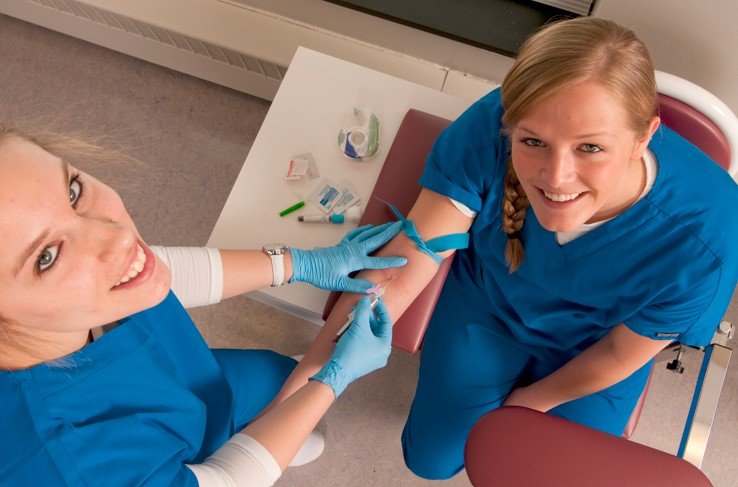Key Variances in Regulations for Medical Device Manufacturing Between the FDA and State Agencies
Summary
- The FDA regulates medical device manufacturing at the federal level in the United States.
- State agencies may have additional Regulations that medical device manufacturers must comply with.
- Understanding the differences in Regulations between the FDA and state agencies is crucial for compliance in the medical device manufacturing industry.
Medical device manufacturing in the United States is subject to Regulations set forth by both the Food and Drug Administration (FDA) and state agencies. Understanding the differences in Regulations between the FDA and state agencies is crucial for compliance in the industry. This article will explore the key variances in Regulations for medical device manufacturing between the FDA and state agencies in the United States.
Overview of FDA Regulations
The FDA is responsible for regulating the safety and effectiveness of medical devices in the United States. The agency's Regulations aim to ensure that medical devices are safe and reliable for use by healthcare professionals and patients. The FDA requires medical device manufacturers to adhere to specific guidelines and procedures throughout the manufacturing process to ensure quality and safety.
Key Aspects of FDA Regulations
- Pre-market approval: Medical device manufacturers must obtain FDA approval before marketing a new device in the United States. The FDA reviews the safety and effectiveness of the device through a rigorous evaluation process before granting marketing approval.
- Quality systems regulation: The FDA requires medical device manufacturers to establish and maintain quality systems to ensure the safety and effectiveness of their products. This includes implementing procedures for design control, production, and post-market surveillance.
- Labeling requirements: The FDA mandates specific labeling requirements for medical devices to provide users with essential information about the product's intended use, risks, and precautions. Manufacturers must ensure that device labels are accurate and up-to-date.
- Adverse event reporting: Medical device manufacturers are required to report any adverse events or malfunctions associated with their products to the FDA. This helps the agency monitor the safety and performance of medical devices on the market.
State Regulations for Medical Device Manufacturing
In addition to FDA Regulations, medical device manufacturers may also be subject to Regulations set forth by state agencies. State Regulations can vary widely, and manufacturers must comply with the specific requirements of the states in which they operate or distribute their products.
Key Differences in State Regulations
- Licensure requirements: Some states may require medical device manufacturers to obtain a state license before selling or distributing their products within the state. Licensure requirements can vary depending on the type of device being manufactured and the state's Regulations.
- Quality Control standards: State agencies may impose additional Quality Control standards on medical device manufacturers to ensure the safety and effectiveness of their products. Manufacturers must comply with these standards in addition to FDA Regulations.
- Reporting requirements: State agencies may have specific reporting requirements for adverse events or product recalls that differ from those of the FDA. Manufacturers must be aware of and adhere to any state-specific reporting obligations.
Compliance Challenges for Medical Device Manufacturers
Complying with Regulations set forth by both the FDA and state agencies can present challenges for medical device manufacturers. Manufacturers must navigate a complex regulatory landscape to ensure their products meet all requirements for safety and effectiveness. Failure to comply with Regulations can result in penalties, fines, and even product recalls, which can be detrimental to a company's reputation and bottom line.
Best Practices for Compliance
- Stay informed: Medical device manufacturers must stay up-to-date on both FDA and state Regulations to ensure compliance. Regularly monitoring updates and changes to Regulations can help prevent compliance issues.
- Collaborate with regulatory experts: Working with regulatory consultants or experts can help manufacturers navigate complex Regulations and ensure compliance with both federal and state requirements.
- Implement robust quality systems: Establishing and maintaining robust quality systems is crucial for compliance with FDA and state Regulations. Quality systems should include procedures for design control, production, and post-market surveillance.
Conclusion
Regulations for medical device manufacturing in the United States are primarily overseen by the FDA at the federal level. However, state agencies may also impose additional Regulations that manufacturers must adhere to. Understanding the key differences in Regulations between the FDA and state agencies is essential for compliance in the industry. By staying informed, collaborating with regulatory experts, and implementing robust quality systems, medical device manufacturers can navigate the regulatory landscape successfully and ensure the safety and effectiveness of their products.

Disclaimer: The content provided on this blog is for informational purposes only, reflecting the personal opinions and insights of the author(s) on the topics. The information provided should not be used for diagnosing or treating a health problem or disease, and those seeking personal medical advice should consult with a licensed physician. Always seek the advice of your doctor or other qualified health provider regarding a medical condition. Never disregard professional medical advice or delay in seeking it because of something you have read on this website. If you think you may have a medical emergency, call 911 or go to the nearest emergency room immediately. No physician-patient relationship is created by this web site or its use. No contributors to this web site make any representations, express or implied, with respect to the information provided herein or to its use. While we strive to share accurate and up-to-date information, we cannot guarantee the completeness, reliability, or accuracy of the content. The blog may also include links to external websites and resources for the convenience of our readers. Please note that linking to other sites does not imply endorsement of their content, practices, or services by us. Readers should use their discretion and judgment while exploring any external links and resources mentioned on this blog.
